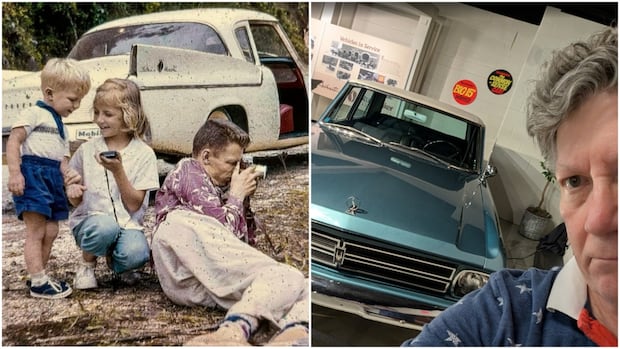Growing up, Alan Harrington and his sister would sometimes ride on the trunk of their family’s Studebaker Silver Hawk, holding onto its tail fins. That type of behaviour is not recommended, Harrington says, “as it can result in a lifelong fascination.”
That’s what happened to him. The Oakville, Ont., man said the Studebaker his family drove while living in Venezuela in the early ’60s is “all I can really remember from that time.”
His interest recently led him to visit the Studebaker National Museum in South Bend, Ind., where he got to see the last car the American manufacturer produced. It was built in Hamilton on March 17, 1966.
For Harrington, the Hammer’s history with Studebaker is a proud reminder of Canada’s car-making legacy.
President Donald Trump says he wants every car sold in the United States to be made domestically, a move which experts say would disrupt the entire North American auto sector for years. Andrew Chang explains how interdependent the Canadian and U.S. auto industries are, and the widespread impacts of severing a 70-year partnership.
“The president of the United States said that we stole these jobs from the Americans. We never stole these jobs. We made these cars. We made good cars here and always have,” Harrington said, referring to the Canada-U.S. trade war.
The United States has placed a range of tariffs on Canadian products including steel, aluminum, vehicles and auto parts. Those tariffs, and recent postponements of local electric vehicle production have raised questions about the future of this country’s auto sector and whether Canada could make its own vehicles.
Studebaker shut down operations in Indiana, leaving the Hamilton Ont. plant as the only one producing the company’s vehicles.
Harrington, who is on the Burlington Historical Society executive, said Studebaker’s history is well remembered in the Hamilton area. There was a Studebaker dealership in Burlington, Ont., and the road where the Hamilton factory was is still called Studebaker Place.
There are also local Studebaker car clubs for drivers who collect vintage models. Harrington said his interest in the brand is more historical. “I don’t know my crank shaft from a muffler.”

Studebaker was significant in part because of the kind of car they built, he said. In addition to being fast and “very sturdy,” Harrington said, they were family-friendly. “If Corvette were to make a family sedan, that’s what it would be.”
Studebaker began as a wagon producer in South Bend in 1852, the Studebaker National Museum says on its website. It started making cars around the turn of the century, selling its first electric vehicle in 1902. The company produced gas cars throughout the 20th century, establishing itself as a “styling leader” in the ’50s.
The company had a plant in what is now Windsor, Ont., through the 1910s to 1930s. The Hamilton plant opened in 1948 in a facility that had been producing anti-aircraft guns during the Second World War.
Studebaker’s South Bend plant closed in 1963, with production continuing only in Hamilton.

A 1964 CBC report said the plant produced 48 cars per day and nearly 8,000 per year, but was working to increase production to 30,000.
It wasn’t enough to keep up with the competition. When that plant closed too, it put almost 700 people out of work.
The company’s archives and vehicle collection went to the City of South Bend and have since been well preserved, Harrington said.
It was “neat,” to see the last Studebaker, he said, and it brought back childhood memories. “It’s a part of our heritage.”








